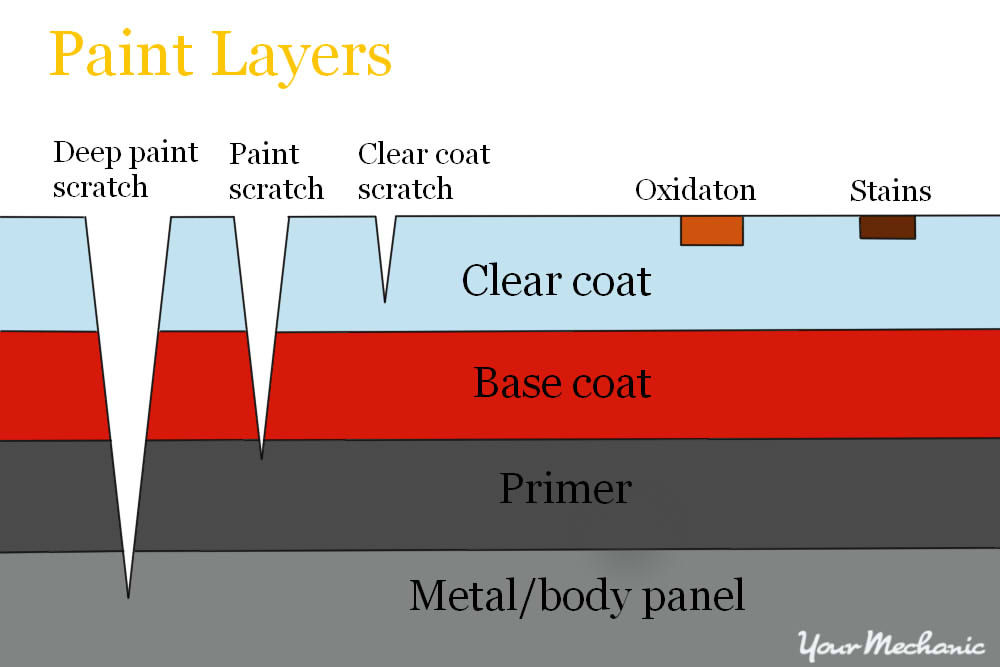VEHICLE CLEAR COAT
As a vehicle owner, or someone interested in getting your vehicle detailed, understanding automobile clear coat is an extremely important part of the equation. Simply put, a clear coat is the outermost layer of protection that is applied to all modern vehicle paints. This clear coat helps defend against pollutants, the elements, normal wear/tear, and most of all, the UV rays from the sun. The main job of a clear coat is to protect the vehicle's paint from the damaging effects of the sun's UV rays. As a rule, clear coat is extremely thin. If you can imagine how thin the cellophane wrapper is on the outside of a pack of cigarettes or a pack of gum, that will give you a good idea of the thickness of your car's clear coat. It's very, very thin, and therefore there is not much of it! This is important to understand when making decisions with your vehicle about polishing, wet sanding, etc. To understand more, click the following links about the effects of polishing and wet sanding your vehicle's clear coat or corresponding pages under the information tab.
When a vehicle gets scratched through the clear coat, the only way to repair it is to wet sand that area of the clear coat down to the lowest point of the scratch, then polish. By understanding that clear coat protects the paint from the sun, it must also be understood that wet sanding any area of the paint will make it more vulnerable to the sun's effects. If you go to the beach to swim and you put on 50 SPF, after 20 minutes in the water, the sunscreen on your skin would probably be more like 30 SPF due to it washing off while swimming. This is much like a car clear coat when it is wet-sanded. Whichever area was wet sanded will by nature be more susceptible to the sun, however for the most part this is a non-issue with proper sealants applied afterward.

